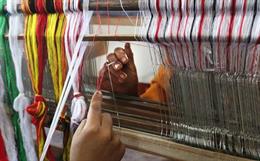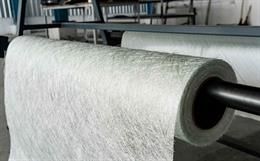Among natural fibres, lignocellulosic fibres, which have been used as reinforcement materials for over 3,000 years, remain a popular choice. As the world increasingly seeks sustainable alternatives to synthetic materials, natural fibre composites (NFCs) are emerging as a promising solution. These materials, composed of natural fibres embedded in a polymer matrix, offer an appealing blend of renewable resources, lightweight properties, and desirable mechanical characteristics. The potential applications of NFCs are vast and growing, spanning industries such as automotive, construction, and packaging. This article explores the exciting world of these materials, examining the areas where they are making a significant impact.
Classification of Natural Fibres
Plant fibres, primarily natural composites with a cellular structure, are composed of cellulose, hemicellulose, and lignin. Widely used in composite industries, these fibres are extracted from various plant parts like bast, leaves, seeds, fruits, wood, stalks, and grasses. They are categorised into bast, stalk, leaf, seed, fruit, and other fibres (see Figure 1).

Classification of Bio-composites
The classification of bio-composites is shown in Fig. 2. Bio-based composites can be categorised as either ‘green’ or ‘partly eco-friendly’ based on the origin of their components. Green composites are entirely derived from renewable resources, potentially reducing carbon emissions and dependence on fossil fuels. In contrast, partly eco-friendly composites incorporate at least one component (fibre or matrix) from non-renewable sources.

Applications
Industries such as automotive, construction, energy, and aerospace are facing increasing societal and governmental pressure to reduce environmental impact and reliance on fossil fuels. Natural fibres present a promising solution to these challenges due to their renewability and potential to create jobs in rural areas. By aligning with the United Nations Sustainable Development Goals—such as poverty reduction, industrialisation, sustainable cities, and responsible consumption—natural fibres can contribute to both environmental sustainability and socioeconomic progress.
The growing focus on renewable resources, recyclability, and biodegradability is driving a shift away from petroleum-based synthetics in favour of natural fibres, particularly in the automotive sector. The use of NFCs in automobiles dates back to the 1940s when Henry Ford incorporated hemp fibre into car components. Later examples include the East German Trabant’s body in the 1950s and Daimler-Benz and Mercedes’ use of NFCs in the 1990s.
The automotive industry is drawn to NFCs due to their potential for weight reduction (up to 30 per cent) and cost savings (around 20 per cent). These materials contribute to lower fuel consumption, improved recyclability, reduced waste, and decreased greenhouse gas emissions. While NFCs are primarily used in interior components like dashboards, door panels, and seat cushions, their use in exterior parts remains limited (see Fig. 3 for various NFC applications).
NFCs can also replace wood, enabling the production of various types of furniture. In the marine sector, NFCs are used to construct lightweight, durable hulls and decks for boats, ranging from small recreational vessels to larger commercial ships. Additionally, they are useful for manufacturing marine equipment, such as buoys and mooring lines.

Conclusion
Natural fibre polymer composites present a promising opportunity to enhance product quality while balancing environmental, economic, and technical considerations. However, challenges remain. One significant issue is the cost variability among different fibres. For instance, fibres like flax, ramie, cotton, and hemp often command higher prices without corresponding improvements in mechanical properties. Factors such as availability and reliability further contribute to this disparity. As a result, selecting the optimal natural fibre for a specific application requires a thorough analysis and decision-making process.
Despite these challenges, natural fibres have found applications across various industries. The automotive sector stands out as a pioneer in developing non-structural and semi-structural components using these materials. Additionally, other industries—including furniture, medical, and sports—are increasingly adopting NFCs in their products.







